|
Myths about pigs We have all heard people say “Gross!! You let a pig live in your house??” Pig parents usually chuckle to themselves and think, boy, there are a lot of stereotypes out there about pigs. So we are trying to set the record straight now! 1. Pigs are dirty, stinky and disgusting Ok, no they're not. Pigs are actually very clean animals to be honest. They don’t like to potty where they eat or sleep and they do not have an odor like some other species of animals. Pigs WILL get muddy or wallow around in mud and muck to cool themselves off in the summertime though. They will also get in a kiddie pool to achieve the same result, if given the opportunity. 2. Pigs are just like dogs Wrong. Pigs are much smarter than dogs actually. Because of the intelligence level, pigs need constant stimulation and activities that entertain them. A bored pig can be a destructive pig. I live by that rule. Giving your pig something to do or some form of enrichment can help alleviate some of the trouble they get into. 3. Pigs stay small Nope. 99% of pigs grow much bigger than “promised” or “guaranteed”. There are a handful of pigs that have stayed small. Did those owners win the genetic lottery? I don’t think so….others may disagree, but, big pigs are just as much fun as smaller pigs. In general, pigs usually grow the most in the first 3 years although technically, they're not mature until around the age of 3-5 years old. Maturity is defined as the time when the epiphyseal plate in the long bones close and that typically happens around age 5. If you are new to pigs, be prepared for a pig that weighs somewhere between 75-200lbs. They will continue to grow fatter/heavier as long as their caloric intake exceeds the amount of calories they exert. But the overall height/length? It is genetically pre-determined. What's even funnier is when people ask "why didn't you get one of those teacup pigs?". The same reason I didn't run out and get a unicorn. THERE IS NO SUCH A THING AS A TEACUP PIG! (This is just a marketing term and there are no breeds such as teacup, micro, micro mini, pocket pig, apartment pig, designer pig, royal dandy, dandy pig, etc.) If you truly want to research breeds of pigs, please check out our breed section where there are references that will show you ALL the actual breeds of pigs. Click here to read about the teacup myth. "Mini" pig is NOT a breed either, it is a classification of pigs and the word has become the standard to describe a pig small than a farm pig, or to distinguish the difference between the smaller breeds and the farm pigs. 4. Pigs are dumb Quite the contrary, pigs are super intelligent and their way of troubleshooting and thinking has been compared to the intelligence of a 3 year old child. Pigs are far from dumb and once you add a pig to your home, you will find that out. They actually get bored easily and need "enrichment" activities to keep them occupied. 5. Pigs are mean and aggressive Wrong again. Your pig will be as good as you train your pig to be. Pigs DO require training. Saying that all pigs are mean and aggressive is not at all accurate. Intact pigs tend to have aggressive tendencies as they sexually mature as do untrained pigs. However, that is not the nature of the pig, that is directly YOUR fault for not spaying/neutering or training. AND, this can be fixed with a procedure to remove the reproductive organs and behavioral modification plan. BUT, not ALL pigs are mean and aggressive, most are lovable pets. If you are having issues with aggression and your pig, click here to read more about correcting that behavior. 6. Pigs are gluttons; thus the phrase “Quit being a pig” or “You’re hogging it all”. I will have to admit; this is partially true. Most pigs, if unattended, would eat until they vomited and then they would eat that. (At least in my experience) But, that is probably because we do restrict their diets to avoid obesity. So when given the opportunity to eat as much as they want, they take it and run with it. 7. Pigs are fat, they can’t run fast Haha, oh yes they can! It has been said pigs can run as fast as 11 mph. A wild pig is said to be much faster, 30-35 mph. How is that possible? Instincts! Pigs are prey animals, so if they need to run, they can. 8. Pigs can’t swim Sure they can! Have you ever heard of Pig Island in the Bahama’s? This is an island that is the home of many pigs and no people. Cruise ships are known to throw scraps out around the island, the pigs eventually caught on to that and can now be seen swimming out to boats for a treat. Even domestic pigs love to swim. An obese pig may have a more difficult time keeping themselves above water, so if you plan to test this theory or want to see how your pig does in the water, make sure its non-chlorinated water such as a fresh body of water or lake, and have a plan should your pig not catch on quickly. Do NOT throw your pig in any body of water and expect them to know how to swim….they may, but they also may not, especially an older pig who has never been swimming. 9. Pigs do not shed Yes they do. Not in the traditional sense, but pigs do blow their coats (lose all their hair) once, sometimes twice a year. Most pigs do NOT blow their coat the first year, but each pig is different. Pigs are also prone to dry skin. So, flaky skin is a common problem that people aren't prepared for when they hear pigs are hypoallergenic. There are ALOT of people whose skin breaks out or becomes itchy when the hard hair bristles touch their skin. Pigs can lose their hair due to nutritional deficiencies, parasites or because of the seasonal blowing of the coat. 10. Pigs don’t “play” Pigs, especially younger pigs, LOVE to play. Your pig will be as active as you allow. If you have a fenced in yard free from predator type animals, your pig would love to be outside playing. “Zoomies” is a word pig parents adopted to describe the little bursts of energy that would send a pig running like he late for dinner. They “zoom” around extremely fast and are usually having a lot of fun. You may also hear your pig "bark" as he/she is outside running around, so don't be surprised if you hear the fun as well. 11. Pigs can’t communicate This is absolutely NOT true. Pigs DO communicate with their surrogate parents as well as other pigs. You have to determine what their sounds mean. For example, if your pig hasn't seen you for a few hours and has a panting type noise when they see you, that is a happy sound and I interpret the sound as an I love you. When a pig is running, possibly even with a case of zoomies, and you hear what sounds like a series of barks; this is usually also a happy sound. They're having a good time and thats the sound they make when they're having fun. One single bark is usually because a pig is started or scared like something unexpected happened. I have even heard a pig say “mama” at dinner time. (Likely not intentional, but very clear) Pigs can also communicate with each other through scent. Click here to listen to common pig sounds and what we think they mean. 12. Pigs do fine alone Some pigs do fine without another pig or other animals, but pigs are social animals and have a herd mindset, so while they may be ok without another animal friend, they still need interaction. Humans are part of their herd and they need love and attention from their mama and daddy. Having a second pig provides someone who speaks the same language and that alone, has its’ own set of benefits. 13. Pigs are boring This is incorrect as well. I have had the best of times when my pig has been involved. Memorable experiences that not everyone can say they've had. My pig loves to run with me in the yard, my pig has done community events, like kiss the pig events, my pig LOVES playing with balls, she helps me with the garden, she helps me clean around the edges in the kitchen, she will snuggle with me during a scary movie, but most of all, she has unconditional love for me and everyone else in my home. Strangers? Not so much, but she is a big ball of fun. 14. Pigs do not like to try new things This is also incorrect. While pigs are creatures of habit, when allowed, pigs are the first on the scene to investigate something new. Something new can be something new to their area like a new toy or a fresh bale of straw, new can be cleaning out their house, a new food or even a new animal to the herd. They LOVE to explore and try new things. 15. Pigs can’t get fleas Yes they can. Typically, pigs have much softer skin when they're piglets and piglets can definitely get flea infestations. Older pigs usually are only affected on the softer skin areas like the belly and inside of the legs and don’t usually “carry” fleas like the piglets, but they can still get flea bites. What is just as bad as a flea infestation and something pigs can and often do get? Mange. 16. Pigs are immune to snake bites This is so insanely untrue it’s not even funny. Pigs have died from snake bites. No animal is immune to snake bites, but pigs have a thicker layer of skin than most animals. The reason pigs aren't affected to the same degree as humans is due to the thick layer of adipose tissue that makes it harder for venom to seep into the bloodstream. Science Daily notes that adipose tissue is normally found beneath the skin and around internal organs in mammals, so this adipose tissue does act as guard to the blood vessels, but certainly doesn't eliminate the possibility of the venom getting into the bloodstream. Pigs kill snakes out of natural instinct. Pigs also readily devour snakes around them. Luckily, they're not like cats and don't bring half eaten snakes to the door as a gift or a way to say thank you. Click here to read more about snakes and spiders and pigs. 17. Pigs will eat anything HAHA. I wish. I have found domesticated pigs are quite picky about what they will eat. They develop food preferences just like people and will simply refuse to eat certain things. Part of that is our pigs “training us” versus the other way around. Their taste changes just like ours, so something they didn't like a year ago can be introduced again and your pig may love it. One of our piggy friends shared a video with us on our FB page to prove that pigs do NOT eat everything. https://www.facebook.com/renee.lincoln/videos/Melvin won't eat celery. 18. Pet pigs do not need vaccinations or deworming, especially if my pig is an indoor pig This is very region specific. But, most pigs will spend some time outside and dig around in the soil where some of these diseases and parasites are present. Some vets will recommend vaccinations for diseases that are commonly found in your area. Rabies is not common amongst our porcine friends, but there have been + rabies in pigs. There is NOT a pig approved rabies vaccination, but most vets will use it off label for preventative purposes. Some city ordinances require your pig to be vaccinated, so make sure you know the laws in your area. Some diseases/illnesses can be prevented by vaccinating. Some of these diseases can be deadly if not treated promptly/timely and can be prevented altogether or at least lessen the chances of your pig contracting it with vaccinations. Parasite treatment should be given per your vets instruction, but most pig parents treat proactively with anti-parasite medications every 4-6 months so they can avoid an infestation. Some common illnesses/diseases have vaccinations that can lessen your pigs chances of contracting some of these potentially deadly diseases. Click here to read more about vaccinations and talk to your vet to see what they recommend for your pig based on what on what diseases are common in your region. Click here to read more about parasite control. 19. Pigs have a mohawk that raises when they're happy This is true, however, the mohawk can stand upright for other reasons as well and it isn't always because they're happy. The mohawk signifies happiness, but also fright and anger. The mohawk raises when a pig is being aggressive or when challenging another animal for the “top hog” spot to make it appear like he/she is a more vicious and larger animal. Typically, in addition to the mohawk standing upright, there is chomping, frothing, charging and an aggressive or challenging posture that accompanies it. 20. Pigs are hard and time consuming to care for
Yes and No. Pigs aren't pets that everyone should have. Pigs are time consuming in the fact they require a lot of attention and social interaction, the fact that there aren't many that can “pig-sit” while you go on vacation or the fact that not all vets will accept a pig as a client are just a few of the “hard to care for” points. These things do make it more difficult than other traditional animals. Actually caring for them? That isn't too hard. They do require a special diet, if given the choice, pigs likely wouldn't pick the most nutritious food between candy and veggies. They are not a garbage disposal and shouldn't be given foods rich in sodium, human table scraps (or human food in general with the exception of fresh veggies and fruit) or other fattening foods. They don’t maintain or lose weight by exercise, they lose weight by getting fed less and maintain their weight by the caretaker balancing food intake and activity levels. They need outside time to be a pig, they need regular hoof trims if their hooves don’t wear down naturally, regular vet check-ups. Pigs need training, and they need a safe place to go free from predators. So, while caring for a pig might not take a rocket scientist, you do have to be creative when you are trying to figure out ways to entertain them, ways to transport a large/mature pig, keep them contained or keep their minds occupied amongst other things. Pigs are NOT for everyone, so if you don't like hard work, a pig is likely not the best pet for you.
25 Comments
When choosing your pigs diet, these essential vitamins and minerals that also need to be factored in and/or considered. Because most average pig owners do not have a nutrition degree, we recommend that a manufactured pig feed be the main part of the diet so that vitamin or mineral deficiencies aren’t an issue for you and your pig. Can your pig have an all-natural diet? Sure…but you will need to be sure the diet is balanced and includes all the essentials being represented in the right amounts. Some of the deficiencies take some time to show up, some will show up right away, but this is something that will be ever changing and you can’t take part of an all-natural diet and apply it when you want. This must be done with consistency or the diet will not be balanced and you will be risking the health of your pig. If you are feeding a pelleted diet, this will likely not affect you, but if you are feeding an all natural diet, these are things you need to consider when deciding what you will feed your pig. Pigs are mostly omnivores, which means they eat meat as well as plants and they have a high requirement for minerals, which is not surprising considering the time, spent digging and the amount of earth that may get swallowed. Because omnivores do not eat much herbage, they do not need ruminants like cattle and sheep. The main type of digestion in the pig is enzymatic and takes place in the stomach and small intestines, The salvia of omnivores contain an amylase enzyme so digestion begins as soon as food enters the mouth. Because bacteria only plays small role in a pigs digestion, its food must always consist largely od starch, sugar, fat and protein of a high biological standard that can be rendered soluble by the enzymes secreted in the stomach and intestines. Because of the small amount of vitamin synthesis that takes place in omnivores, it s essential to receive most of the vitamins required in the food. With animal vitamin and mineral supplementation, the golden rule is to have your soil tested to see what the deficiencies are in the soil. If your animals are living on what you are producing on your land, they will have the same deficiencies as the land. If you notice that your pig is standing there looking at you and licking their lips, they could have a protein deficiency, you may want to think about supplementing with fish or meat meal, whey or cod liver oil, etc. In a book I am reading, Farming naturally and organic animal care by Pat Colby, she says soybean meal can deplete iodine. She goes on to say that after 20 years of conventional farming, large amounts of seaweed meal, extra copper and zinc as well as dolomite are needed to keep pigs healthy. She went on further to say that whatever diet was fed to pigs, they would benefit from the following additives: Dolomite: Teaspoon per head daily. Seaweed: seaweed products of some kind. Sulphur: A teaspoon per head daily. Cod Liver Oil: A teaspoon at least once a week. If the pigs are totally free range, she suggested a salt lick similar to those given to cattle. (This would need to be used with the strictest of supervision) Sulphur in the diet should stop skin problems or it could be sued externally as a paste mixed with cooking oil. Fat deficiency: Signs are hair loss and scaly flaky skin, dermatitis, areas of skin necrosis on the neck and shoulders and an unthrifty appearance in growing pigs. A level of 1-1.5% of fat seems ample to supply the essential fatty acids. The rest of this blog will address the vitamins and minerals pigs’ need and what these vitamins and minerals are responsible for in the body. Calcium Function: Assists in the contraction of the muscles. Required for blood clotting. Assists in the production of hormones and enzymes. Works with phosphorus and Vitamin D to produce bone, bone is 35% calcium. Sources for calcium: green leafy forage, limestone oyster shell flour, fishmeal, and bone meal Herb sources: Alfalfa, blue cohosh, chamomile, cleavers, coltsfoot, cayenne, comfrey, dandelion, kelp, mistletoe, meadowsweet, nettles, parsley, plantain, raspberry, rose hips, shepherds purse, yarrow and yellow dock. Deficiencies: Rickets in young, developmental orthopedic disease, poor muscle function, impaired blood clotting, joint problems and bone weakness and posterior paralysis. Phosphorous Function: Works with calcium for bone growth. Assists in energy metabolism. Makes up 15% of the bones. Too much phosphorous will reduce the absorption of calcium during digestion. Sources: Cereals, lucerne, fish and meat meals Herb sources: Alfalfa, anise, asparagus, blue cohosh, caraway, cayenne, chickweed, calamus, dandelion, fenugreek, garlic, golden rod, kelp, licorice, linseed, marigold, meadowsweet, parsley, raspberry, rose hips, sunflower and yellow dock Deficiencies: Overfeeding of phosphorous can lead to lameness, fragile bones, enlargement of the jawbone and hyperparathyroidism. Magnesium Function: Required for hemoglobin formation in the blood. Assists in bone formation and assists in enzyme functions of the body. Sources: Alfalfa, clover, bran, linseed, milk Herb sources: Alfalfa, blue cohosh, broom, carrot leaves, cayenne, dandelion, hops, marshmallow, meadowsweet, mistletoe, mullein, peppermint, raspberry, slippery elm. Deficiencies: Nervousness and excitability. Increased respiratory rates, muscle tremor, aggressiveness and ill temper. Sulphur Function: Contains amino acids and methionine and cysteine. Assists in enzyme and hormone production. Sources: Protein feeds and green forage Herb sources: Alfalfa, burdock, broom, calamus, coltsfoot, cayenne, daisy, eyebright, fennel garlic, kelp, marigold, meadowsweet, mullein, nettle, parsley, plantain, raspberry, sage, shepherds purse, thyme and yarrow. Deficiencies: None noted, but overdosing can lead to loss of weight and appetite, colic and yellow, frothy discharge from the nose and labored breathing. Sodium Chloride Function: Maintains the balance of fluids in the cells. Assists in muscle contractions, removes waste products from the cells. required in the production of bile. Maintains the health of the nervous system. Sources: Salt or salt licks. green forages, especially alfalfa. Deficiencies: Dehydration, poor growth, muscle cramps, reduced appetite, poor hair and skin condition. Pigs will often be seen drinking the urine of other pigs when they have a sodium chloride deficiency. Overfeeding of this can lead to salt toxicity or water deprivation poisoning as well as hypertension (high blood pressure). Potassium Function: Works with sodium to assist in correct nerve function and muscle contractions. Assists in maintaining the correct fluid balance in the body. May reduce heart rate. Sources: Green forage, maize and molasses Herb sources: Alfalfa, blue cohosh, borage, carrot leaves, chamomile, coltsfoot, comfrey, couch, grass, centaury, dandelion, elder, eyebright, fennel, kelp, ladies mantle, mistletoe, meadowsweet, mullein, nettles, parsley, peppermint, plantain, raspberry, shepherds purse, skullcap, wormwood and yarrow. Deficiencies: Weight loss, diarrhea and muscle weakness Zinc Function: Assists in the metabolism of nutrients. Required for the immune system to function correctly. needed for healthy skin, hair and hooves. Assists in blood formation. Sources: Yeast, bran, cereal germ, and zinc sulphate Herb sources: Kelp and marshmallow Deficiencies: Can lead to dry flaky skin, hair loss and poor overall growth in addition to smaller and fewer piglets. It can also lead to a lowered immune system. Copper Function: Essential in the formation of hemoglobin, cartilage and bone. Required for the correct utilization of iron in the body. Sources: Grassland, copper, sulphate, copper carbonate Herbal sources: Burdock, chickweed, chicory, dandelion, fennel, garlic, horseradish, kelp, parsley and yarrow Deficiencies: Brittle weak bones, anemia, faded/dull coat, poor iron metabolism, bowing of the legs, cardiac and vascular disorders. Manganese Function: Required for the utilization of fats and carbohydrates. essential for the formation of cartilage, assists in the formation of bones and enzymes. Some benefits in pigs can be higher total litter and piglet weight at birth. Sources: Wheat bran, most grains and grasslands Herb sources; Kelp Deficiencies: Deformed piglets whose bones are not correctly developed. Irregular or absent estrous cycles, weak piglets at birth and reduced milk production. Iron Function: Essential for the formation of hemoglobin and red blood cells Sources: Grasslands and cereals Herb sources: Alfalfa, asparagus, bilberry, burdock, blue cohosh, cayenne, chicory, comfrey, dandelion, gentian, hawthorn, hops, mullein, nettles, parsley, raspberry, skullcap, vervain, yellow dock Deficiencies: Anemia, poor performance, poor growth in young pigs, can be contributed to labored breathing. Fluorine Function: Essential for the formation of healthy teeth and bones, helps prevent tooth decay. Combines with calcium in the body and gives strength to the bones. Sources: Pasture, hay, water and limestone based supplements Herb sources; Alfalfa, beet leaves, garlic, watercress Deficiencies: Deficiencies are rare but overdosing can occur especially where soils are rich in this mineral and the water has been treated with it as well. Signs of overdosing are discolored, mottled teeth, poor condition and rough coat and lameness in joints, usually all of them. Iodine Function: Needed for correct functioning of the thyroid gland. required for reproductive cycle to function correctly. Sources; Kelp, pasture and mineral licks Herb sources: Asparagus, cleavers, garlic, kelp, speedwell and sarsaparilla. Deficiencies: Abnormal estrous cycle. Piglet can be stillborn while others may be hairless and exhibit weakness and/or deformed joints. Overdosing can lead to enlarged thyroid glands. Selenium Function: Works with vitamin E. Essential part of antioxidant enzymes that help to remove toxins from the system. A component of the amino acids methionine and cysteine. Assists in maintaining a healthy immune system. Sources: Pastures, alfalfa, fishmeal, rapeseed meal and linseed. Deficiencies: Can be labored breathing and white muscle disease. Overfeeding can cause poisoning, impaired reproduction, reduced milk and mulberry heart disease. Vitamin A Function: Needed for hormone synthesis, bone growth and used in most of the mucous membranes of the body. Essential for vision and reproduction. Sources: Carrots, carotene in green leaf plants and cod liver oil Herb sources: Alfalfa, burdock, cayenne, comfrey, dandelion, kelp, marshmallow, papaya, parsley, raspberry, red clover, watercress, and yellow dock Deficiencies: Night blindness, excessive tears lack of appetite, infections of the reproductive tract, poor growth and weak bones and tendons, incoordination and posterior paralysis. B1 Thiamine Function: Assists in the metabolizing of carbohydrates. Maintains a healthy nervous system. Assists in energy metabolism. This vitamin is made by micro flora in the intestines. Sources: Good forage, good hay, cereal grains, millet, rice bran and brewers yeast Herb sources: Alfalfa, burdock, cayenne, comfrey, dandelion, kelp, marshmallow, papaya, parsley, raspberry, red clover, watercress and yellow dock Deficiencies: Weigh loss, muscular incoordination and missed heartbeats. Deficiencies are fairly rare due to this vitamin being made in the intestines. B2 Riboflavin Function: Maintains a healthy nervous system. Assists in energy metabolism. this vitamin is also made in the intestines. Source: Green forage, peanut meal, whey, brewer's yeast, good hay and milk. Herb sources: Alfalfa, burdock, fenugreek, kelp, parsley and watercress. Deficiencies: Rough coat and dry skin, conjunctivitis, excessive tearing and may be connected with moon blindness. Hair loss. Deficiencies are rare. B3 Niacin Function: Helps in the metabolism of nutrients and also with hormone and lipid syntheses. This vitamin is also made in the intestines. Sources: Green forage especially lucerne Herb sources: Alfalfa, burdock, fenugreek, kelp, parsley and sage Deficiencies: Inflammatory lesions of the GI tract and diarrhea, weight loss, rough skin and coat and dermatitis on the ears. Overdosing may cause dilation of the blood vessels, sickness and itching of the skin. B5 Pantothenic Acid Function: Assists in energy metabolism and the formation of antibodies. Sources: Green forage, cereals and peas Deficiencies: Deficiency is rare as this vitamin is made in the intestines B6 Pyridoxine Function: Assists in energy metabolism, maintains health of the nervous system. Assists in the formation of hemoglobin in the blood. Maintains the overall health of the immune system. May increase litter size. This vitamin is made in the bowel. Sources: Green forage and cereal grains Herb sources: Alfalfa, chlorophyll Deficiencies: Reduced appetite and growth rate, eye secretions, convulsions, unsteadiness in use of the legs. B12 Cyanocobalamin Function: Assists in the production of red blood cells. Assists in energy metabolism. Good for stress. Can assist in putting on condition and correcting anemia. Improved reproduction performance, This vitamin is made in the bowel. Source: Green forages Herb sources: Alfalfa, chlorophyll, dong quai, and kelp Deficiencies: Reduced weight gain, lack of appetite, rough skin and coat, irritability, voice failure and pain and incoordination in the hindquarters. Biotin Function: Assists in the metabolism of energy. Maintains sebaceous glands in the skin. maintains bone marrow, may improve litter number and birth weight. Sources: Yeast, green forage and cereals. Deficiencies: Excessive hair loss, skin ulceration and dermatitis, eye exudate, inflammation of the mucous membranes of the mouth. Choline Function: Assists in the transport of fats stored in the liver to other areas of the body for use as energy. Maintains a healthy nervous system. Structural component of the cell membrane. May increase live piglets born and weaned and improve conception rates. Sources: natural fats, fish meal, green leafy forage, rapeseed and yeast cereals Deficiencies: Can lead to poor growth and increased storage of fats in the liver. reduced weight gain, rough hair coat and staggering gait. Folic Acid Function: Assists in cell metabolism. Required for red blood cell formation. Assists in general metabolism. Sources: Green leafy forage Deficiencies: Slow weight gain, fading hair color Vitamin C (Ascorbic Acid) Function: Essential for the formation of collagen tissue which is vital in tendons and cartilage. Essential for the utilization of essential amino acids lysine and proline, Has a role as an antioxidant. Reported to reduce naval bleeding in newborn piglets. Sources: Made in the liver and other body cells Herb sources: Alfalfa, burdock, catnip, cayenne, chickweed, dandelion, hawthorn, garlic, horseradish, kelp, parsley, plantain, papaya, raspberry, rosehips, shepherds purse and yellow dock. Deficiencies: None recorded. Supplementation has been given periods of stress and growth. Vitamin D Function: Essential for the absorption of calcium and for growth maintenance and repair of bones and teeth. Sources: Cut and dried plants, fish oils and through the skin after direct contact with sunlight. Herb sources: Alfalfa, chlorophyll, don quai and kelp. Deficiencies: Reduced growth, weak bones and increased bone problems, rickets. Vitamin E Function: Helps with the immune system and is a powerful antioxidant. Helps stabilize cell membranes and acts on the reproductive system. Sources; Leafy green forage, good hay, cereals and alfalfa. Herb sources: Alfalfa, dandelion, dong quai, kelp, raspberry, rose hips and watercress. Deficiencies: Anemia, swelling of joints, muscular incoordination and reduced stamina. Skeletal and cardiac degeneration. Vitamin K Function: Helps in the clotting of blood and in calcium assimilation. Sources: Made in the gut from green leafy forage. Herb sources: Alfalfa, chlorophyll, plantain and shepherds purse Deficiencies: Bleeding and longer clotting time. Enlisting the help of someone with a nutrition degree, someone with years of experience or even one of the pig feed manufacturer's nutritionalists can help you to be sure that your pig is getting what he or she needs to live a long healthy, happy life. Not providing the right amount of feed or the right amount of essential nutrients can lead to serious medical conditions that can claim the life of your pig well before his time. Click here to visit our nutrition section and click here to see what healthy versus unhealthy pigs look like. Don't focus so much on the weight of your pig, but look more towards the shape and size. That should be your biggest factor in determining the amounts of feed and types of foods you are feeding your pig. If you would like to read a vets guide to healthy skin, click here to read the article written by Cathy Zolicani, DVM.
|
AuthorsBrittany Sawyer Archives
July 2019
Categories
All
|
-
- Direct Links To Website Content
- Read BEFORE You Add A Pig To Your Family
- Mini Pig Info Mission
- Teacup/Micro Pig Myth
- What Is A Mini Pig?
- Mini Pig Breeds: Which Ones Are Really Breeds?
- Adoptable Mini Pigs
- Are You As Smart As Your Pig?
- Mini Pig Info Education Series
- Social Media Feeds
- Zoonotic Diseases & Mini Pigs
- Mini Pigs Are NOT Gifts!
- Media/News Links
-
- Pig Health Forms: Tools To Use To Determine If Your Pig Is Sick
-
- Mini Pigs & Erysipelas: Life Saving Info About This Disease
- Dippity Pig Syndrome In Mini Pigs
- Mini Pig Salt Toxicity/Water Deprivation
- Leptospirosis In Mini Pigs
- Swine Pox & Mini Pigs
- Gastric Ulcers: Common Problem For Mini Pigs
- Brucellosis And Mini Pigs
- Mini Pig Pneumonia & Swine Flu
- Foot and Mouth Disease (FMD): A Problem For Pigs In Other Countires
- Pseudorabies: Is My Mini Pig At Risk?
- Mycoplasma Hyosynoviae & Mini Pigs
- Head Tilt In Mini Pigs
- Mini Pig Obstructions: How To Reduce The Risk For Your Pig
- Seizures In Mini Pigs
- Mini Pig Salmonellosis
- PSS (Porcine Stress Syndrome)
- Urinary Tract Infections (UTI) In Mini Pigs
- Urinary Blockages: A Serious Problem For Mini Pigs
- Arthritis And Mini Pigs
- Mini Pig Artophic Rhinitis
- Mini Pig Heart Disease Possibilities
- Common Mini Pig Gastrointestinal Disorders
- Mini Pigs & Pasteurellosis
- Mini Pigs And Rabies
- Mini Pig Genetic Abnormalities
- MIni Pigs & Cancer
- Mini Pig Cough
- Causes For Sudden Death In Mini Pigs
-
- Mini Pig Approved Foods
- Natural Diet For Mini Pigs: How To Create A All-Natural Diet For Your Pig
- Balancing Your Mini Pigs Diet With Activity
- Mini Pig Feed Concerns: Bad/Spoiled Feed
- Mini Pig Nutritional Deficiencies
- How To Estimate A Pigs Weight Without A Scale
- Mini Pig Body Scoring: What Does An Unhealthy Mini Pig Look Like?
- How To Help Your Mini Pig Lose Weight
- Mini Pig Treats And Recipes
- Mini Pig Hydration: The Importance Of Water
-
- Mini Pig CPR/Heimlich Manuever
- Mini Pig Constipation
- How To Treat A Vomiting Mini Pig
- What To Do If Your Mini Pig Gorges On Food?
- Salt Toxicity/Water Deprivation In Mini Pigs
- How To Treat A Fever In Mini Pigs
- Basic Wound Care For Mini Pigs
- Acute Mini Pig Paralysis
- Mini Pig Shock
- What To Do If Your Mini Pig Sustains A Fracture?
- Treatment For Mini Pig Diarrhea
- Hidden Dangers For Mini Pigs: Snakes & Spiders
- Mini Pig Emergency Supplies
- Most Common Mini Pig Problems
-
- Underaged Piglets- The Dangers & Amount Of Care Involved
- How To Estimate The Age Of A Mini Pig
- Mini Pigs and Dogs- Predator Versus Prey- A Risky Combination
- Mini Pig Name Suggestions
- Bathing Mini Pigs
- Mini Pig Travel Regulations
- Mini Pig FAQ
- "Forking" Mini Pigs- No, We Aren't Talking About Eating!
- Mini Pig Potty Training Tips
- Pigs And Stairs: A Potentially Flawed Living Arrangement
- Capturing A Mini Pig On The Loose
- Indoor Mini Pig Spaces
-
-
- Mini Pig Sounds 101
- Mini Pig Harness Training
- Important Information & Tips For Training Your Mini Pig
- Teaching Your Pig To Do Tricks
- Decoding Mini Pig Behavioral Problems
- Mini Pig Behavior: A Quick Introduction
- Common Behavioral Issues In Mini Pigs
- Move The Pig By Lydia Weaver
- Food Aggression In Mini Pigs
- Aggressive Mini Pigs
- Spoiled Pig Syndrome
- ESA (Emotional Support Animals)/Therapy Pets And Service Animals: What Applies To My Mini Pig?
- Mini Pigs Can Be Fun: Training Your Pig Is Key!
-
- Mini Pig Themed Greeting Cards
- Mini Pig DIY Items: Ideas & Inspiration
- Mini Pig Community Chat Forum
- The Loss Of Your Mini Pig
- Website Survey & Various MPI Video Collection
- Mini Pig Research/News Links
- PAL (Pig Advocates League): Our Nonprofit Sister Organization
- Kids Corner: Mini Pig Items For Kids
- Mini Pig Meme's:
- Mini Pig Sitters
- Mini Pig Outreach-Educational Information
- Community Groups For Mini Pig Parents
- "Pigtionary"
- Pig Anatomy and Terminology
- Mini Pig Info Store
- Dear Pig Whisperers Blog
-
- Direct Links To Website Content
- Read BEFORE You Add A Pig To Your Family
- Mini Pig Info Mission
- Teacup/Micro Pig Myth
- What Is A Mini Pig?
- Mini Pig Breeds: Which Ones Are Really Breeds?
- Adoptable Mini Pigs
- Are You As Smart As Your Pig?
- Mini Pig Info Education Series
- Social Media Feeds
- Zoonotic Diseases & Mini Pigs
- Mini Pigs Are NOT Gifts!
- Media/News Links
-
- Pig Health Forms: Tools To Use To Determine If Your Pig Is Sick
-
- Mini Pigs & Erysipelas: Life Saving Info About This Disease
- Dippity Pig Syndrome In Mini Pigs
- Mini Pig Salt Toxicity/Water Deprivation
- Leptospirosis In Mini Pigs
- Swine Pox & Mini Pigs
- Gastric Ulcers: Common Problem For Mini Pigs
- Brucellosis And Mini Pigs
- Mini Pig Pneumonia & Swine Flu
- Foot and Mouth Disease (FMD): A Problem For Pigs In Other Countires
- Pseudorabies: Is My Mini Pig At Risk?
- Mycoplasma Hyosynoviae & Mini Pigs
- Head Tilt In Mini Pigs
- Mini Pig Obstructions: How To Reduce The Risk For Your Pig
- Seizures In Mini Pigs
- Mini Pig Salmonellosis
- PSS (Porcine Stress Syndrome)
- Urinary Tract Infections (UTI) In Mini Pigs
- Urinary Blockages: A Serious Problem For Mini Pigs
- Arthritis And Mini Pigs
- Mini Pig Artophic Rhinitis
- Mini Pig Heart Disease Possibilities
- Common Mini Pig Gastrointestinal Disorders
- Mini Pigs & Pasteurellosis
- Mini Pigs And Rabies
- Mini Pig Genetic Abnormalities
- MIni Pigs & Cancer
- Mini Pig Cough
- Causes For Sudden Death In Mini Pigs
-
- Mini Pig Approved Foods
- Natural Diet For Mini Pigs: How To Create A All-Natural Diet For Your Pig
- Balancing Your Mini Pigs Diet With Activity
- Mini Pig Feed Concerns: Bad/Spoiled Feed
- Mini Pig Nutritional Deficiencies
- How To Estimate A Pigs Weight Without A Scale
- Mini Pig Body Scoring: What Does An Unhealthy Mini Pig Look Like?
- How To Help Your Mini Pig Lose Weight
- Mini Pig Treats And Recipes
- Mini Pig Hydration: The Importance Of Water
-
- Mini Pig CPR/Heimlich Manuever
- Mini Pig Constipation
- How To Treat A Vomiting Mini Pig
- What To Do If Your Mini Pig Gorges On Food?
- Salt Toxicity/Water Deprivation In Mini Pigs
- How To Treat A Fever In Mini Pigs
- Basic Wound Care For Mini Pigs
- Acute Mini Pig Paralysis
- Mini Pig Shock
- What To Do If Your Mini Pig Sustains A Fracture?
- Treatment For Mini Pig Diarrhea
- Hidden Dangers For Mini Pigs: Snakes & Spiders
- Mini Pig Emergency Supplies
- Most Common Mini Pig Problems
-
- Underaged Piglets- The Dangers & Amount Of Care Involved
- How To Estimate The Age Of A Mini Pig
- Mini Pigs and Dogs- Predator Versus Prey- A Risky Combination
- Mini Pig Name Suggestions
- Bathing Mini Pigs
- Mini Pig Travel Regulations
- Mini Pig FAQ
- "Forking" Mini Pigs- No, We Aren't Talking About Eating!
- Mini Pig Potty Training Tips
- Pigs And Stairs: A Potentially Flawed Living Arrangement
- Capturing A Mini Pig On The Loose
- Indoor Mini Pig Spaces
-
-
- Mini Pig Sounds 101
- Mini Pig Harness Training
- Important Information & Tips For Training Your Mini Pig
- Teaching Your Pig To Do Tricks
- Decoding Mini Pig Behavioral Problems
- Mini Pig Behavior: A Quick Introduction
- Common Behavioral Issues In Mini Pigs
- Move The Pig By Lydia Weaver
- Food Aggression In Mini Pigs
- Aggressive Mini Pigs
- Spoiled Pig Syndrome
- ESA (Emotional Support Animals)/Therapy Pets And Service Animals: What Applies To My Mini Pig?
- Mini Pigs Can Be Fun: Training Your Pig Is Key!
-
- Mini Pig Themed Greeting Cards
- Mini Pig DIY Items: Ideas & Inspiration
- Mini Pig Community Chat Forum
- The Loss Of Your Mini Pig
- Website Survey & Various MPI Video Collection
- Mini Pig Research/News Links
- PAL (Pig Advocates League): Our Nonprofit Sister Organization
- Kids Corner: Mini Pig Items For Kids
- Mini Pig Meme's:
- Mini Pig Sitters
- Mini Pig Outreach-Educational Information
- Community Groups For Mini Pig Parents
- "Pigtionary"
- Pig Anatomy and Terminology
- Mini Pig Info Store
- Dear Pig Whisperers Blog







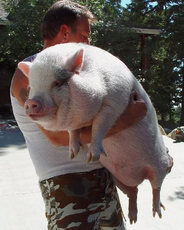

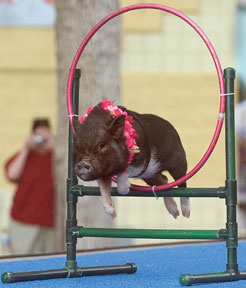

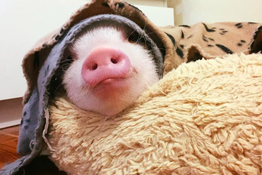



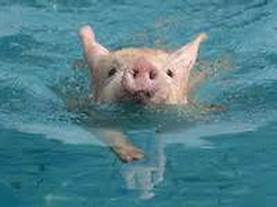


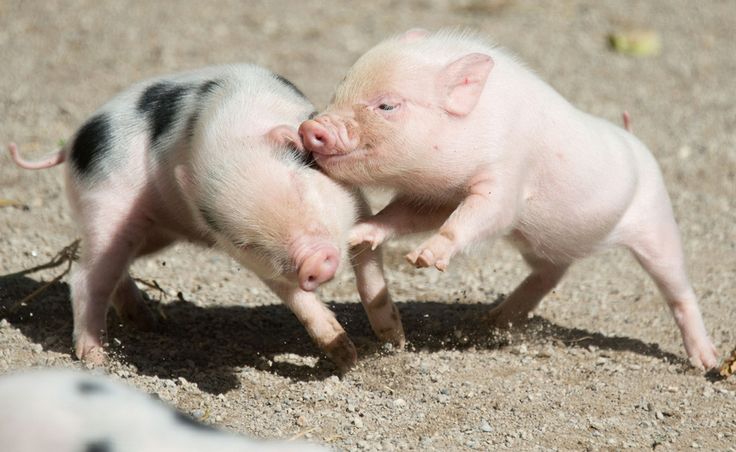


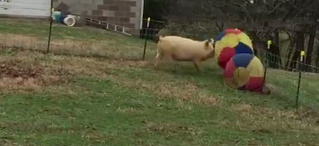










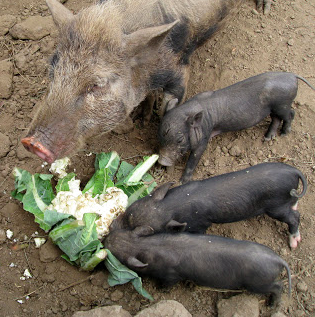


 RSS Feed
RSS Feed